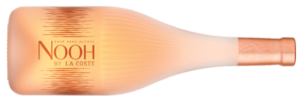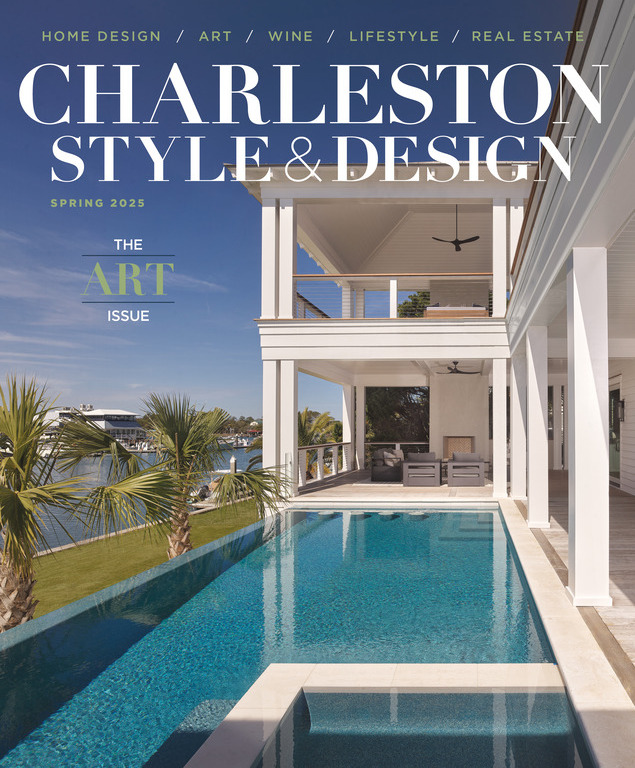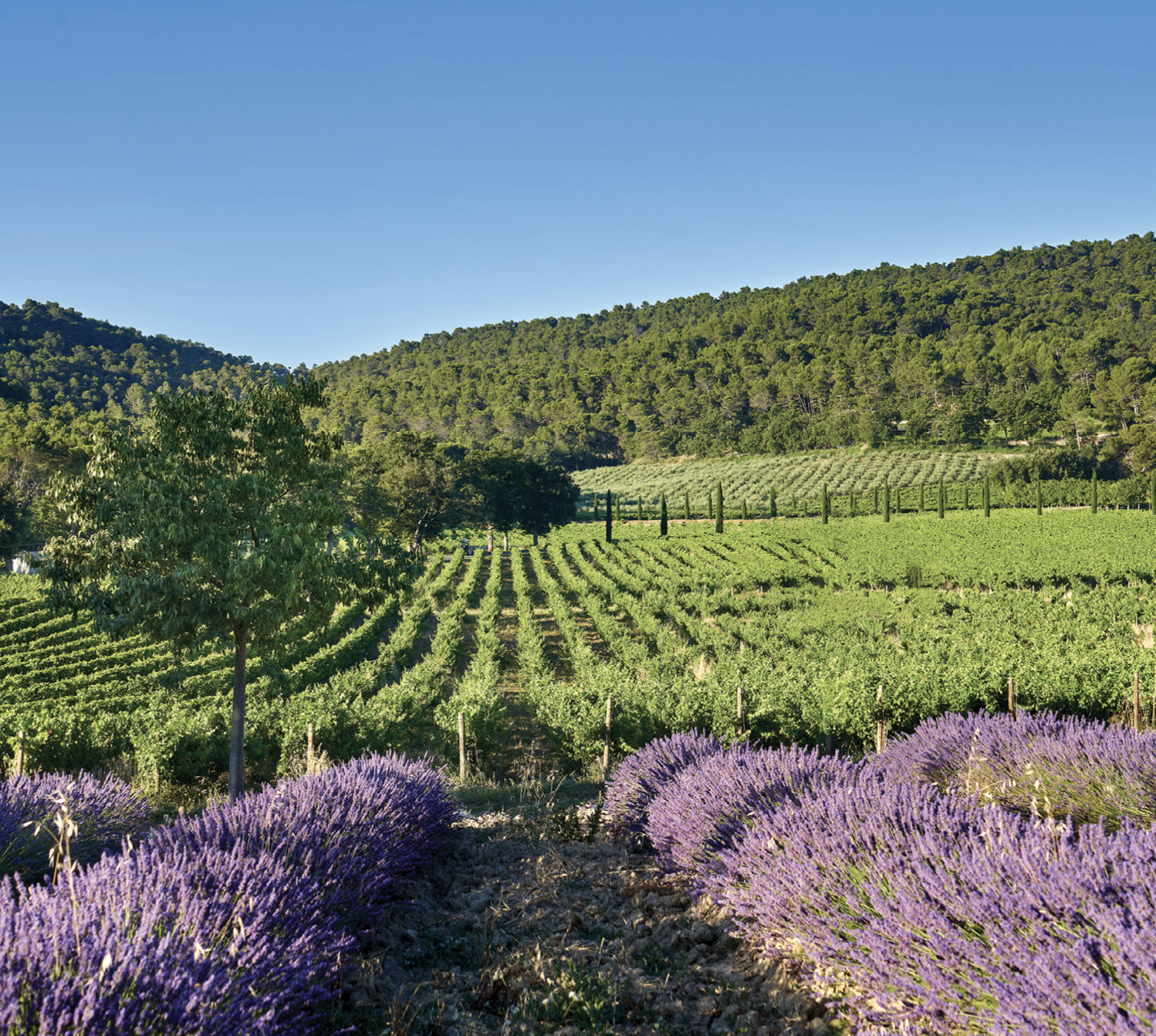
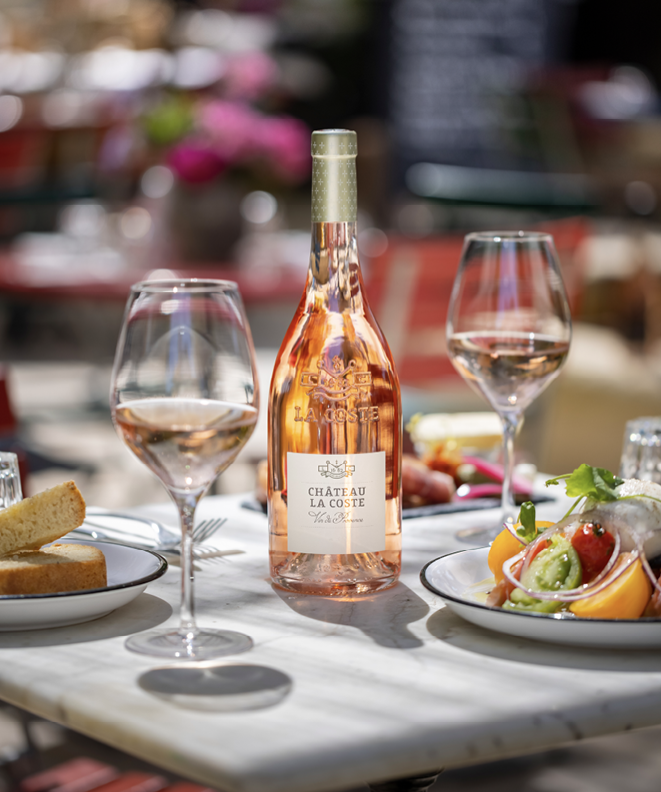
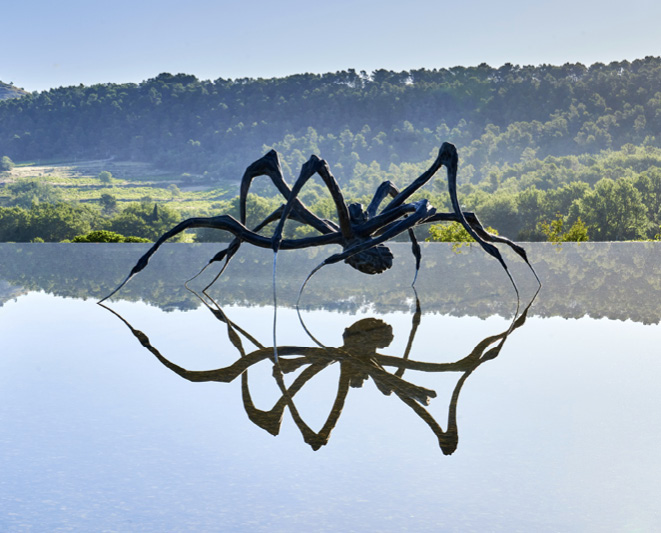
Visitors to the most art-centric winery in the world are greeted by a gigantic bronze spider set above a low pool of water. Crouching Spider (2003) is the work of renowned artist Louise Bourgeois—and one of more than 40 art and architecture installations at Château La Coste, a winery near Aix-en-Provence that spans 600 acres of pristine vineyards, plus boutique accommodations, restaurants and spa facilities. The sculpture park is the vision of Irish art collector and developer Patrick (Paddy) McKillen, who acquired the chateau in 2002. “The winery first and foremost, and the hotel, will allow the architecture and art to continue,” he shared with The Irish Times in 2016.
McKillen has transformed Château La Coste into a thrilling cultural enterprise where art and wine sustain each other. The creative energy enlivens every project, from exhibits and Michelin-star dining to the debut of Nooh by La Coste, the winery’s first nonalcoholic wine series.
Art and wine coexist gracefully in the southern French town of Aix-en-Provence. The painter Paul Cézanne was born here. Together with his childhood friend, the famous novelist Émile Zola, Cézanne would spend endless hours on long walks to explore natural beauty at every turn, taking in the hillsides, forests and farmland that later shaped his art. He particularly loved the view of Montagne Sainte-Victoire, choosing to paint it 87 times. Years later, Pablo Picasso was so inspired by Cézanne (the artist he called “the father of us all”) that he bought a castle overlooking Montagne Sainte-Victoire. Perhaps in tribute to Cézanne, Picasso never painted the mountain; instead, he chose it as a spiritual retreat and final resting place. Château La Coste embraces this vibrant art connection as much as its local wine legacy.
Before Aix-en-Provence was known as “the city of art” it was the city of water. Founded by the Roman consul Sextius Calvinus in 122 B.C., Aix was originally named Aquae Sextiae or “Waters of Sextius.” Wine and water have enjoyed equal standing in Aix for centuries. The Romans carpeted the area with vineyards and tapped the thermal springs that flow from the foothills of Sainte-Victoire to build their celebrated baths, the start of a spa scene that still thrives today. By the height of the Renaissance, Aix was a center of civilization and learning, anchored by the University of Aix-Marseille, an irresistible draw for artists, writers and scholars through the ages, including young Americans on their study abroad. And by the 17th century, the posh nobility had transformed the Cours Mirabeau into one of the most famous avenues in France, lined with grand townhouses, shops and cafés, the place to see and be seen.
The historic Château La Coste was founded in 1682, just as apéritif culture was taking off in nearby Aix. Located just 10 miles north in the idyllic village of Le-Puy-Sainte-Réparade, the beautiful 600-acre estate includes 500 acres of vines planted in a rolling landscape of stone pines, olive trees, oaks, cypress and lavender. It’s a timeless vista that Cézanne would have recognized from his countryside rambles. Certified organic since 2013, La Coste offers a full range of red, white and rosé styles from classic varieties like Syrah, Cinsault, Grenache, Cabernet Sauvignon and Vermentino. The winery credits its legendary terroir (wine speak for the unique combination of soil, elevation and micro-sites) for outstanding quality. Organic and biodynamic practices allow the winemaking team to showcase terroir, working in harmony with nature, like the many artists who came before. And in keeping with the avant-garde approach at La Coste, the gravity-flow winery designed by French architect Jean Nouvel is a tour de force, composed of two barrel-shaped, aluminum-clad structures that shine gloriously amidst the vines.
Few other wines are as synonymous with the place they come from as Provence rosé. In 2015, trendsetters in the Hamptons and Miami proclaimed “the summer of rosé” and proceeded to drink us into a pink wine frenzy; rosé from Provence became the stylish choice to sip poolside and eventually at any social occasion. The region’s winemakers responded with unprecedented increases in new rosé stock. The largest wine appellation is Côtes de Provence, followed by Coteaux d’Aix-en-Provence. Blessed with a warm and breezy Mediterranean climate, Provence is the global benchmark for dry, refreshing and particularly pale-hued rosé wines, which make up most of the region’s production, typically blends from Mourvèdre, Grenache, Cinsault and other varieties.
Château La Coste makes a range of rosé styles, led by Rosé d’Une Nuit, an all-organic cuvée made from Grenache, Syrah, Cabernet Sauvignon and Cinsault; cellared for two years before release, the wine shows a fruit-forward bouquet, lovely roundness and a fresh finish. La Coste Grand Vin Rosé is the estate’s highest-end selection sourced from old vine parcels; cellared up to three years, it shows incredible fruit intensity with aromas of peach, apricot and cassis. And while rosé is the perennial favorite, La Coste also offers refined white and red selections, including a lively, herbal Vermentino and a Grand Vin Rouge with a lush berry fruit character to pair with grilled meats.
The newest release from Château La Coste is Nooh by La Coste, a luxury collection of nonalcoholic wines meant to embody the essence of Provence without the alcohol. Named Nooh (pronounced new) for “no” and the symbol “OH” for alcohol, the wines include sparkling and still rosé, as well as white sparkling and still bottlings. Nooh debuted at Art Basel Miami last December with leading fashion publisher Daily Front Row, making a serious style statement from the outset. “Château La Coste has always challenged us to ask for more from wine, life and culture,” shared McKillen in a statement about the debut. “Nooh presents a nonalcoholic option capturing the essence of our vineyards with a chic profile that delights wine drinkers. One hundred percent Provence in style and inspiration, Nooh is a charming and festive wine designed for sharing in the true French spirit of joie de vivre.”
Part of the growing nonalcoholic wine trend, the artful spirit behind Nooh by La Coste was a considerable scientific endeavor. It took years of trial and experimentation to perfect the flavor and style profile that La Coste is known for across its range. Originally developed from the Rosé d’Une Nuit organic cuvée, Nooh sparkling and still wines are light and alcohol-free (made with just 3.5 grams of residual sugar, they are also low-calorie). The winemaking team gently extracts the alcohol from the wine through advanced vacuum distillation techniques at controlled temperatures that preserve aromatic structure. The vibrant bouquet stands out on the rosés, which show intense grapefruit and strawberry notes complemented by fresh aromas of lemon, jasmine and red berries. For the white still and sparkling selections, plentiful herbal notes recall the rosemary, lavender, juniper and thyme that grow wild on the estate.
Everything McKillen has created at Château La Coste is intensely personal, an exploration of his ever-evolving passion for art, winemaking and new experiences. A devoted art collector with a vast knowledge of five-star hotels, like The Connaught and Claridge’s in London, McKillen called on a blockbuster list of artists and architects—also close friends—to realize his vision in Provence. Frank Gehry, Jean Nouvel, Renzo Piano, Richard Rogers and Tadao Ando have contributed to the cultural park and to the winery and hospitality spaces. Every artist designs their work of art and chooses its location in the Provençal landscape. Once visitors get past the imposing Louise Bourgeois spider, they find much more, including the ironworks Rail Car displayed on train tracks by Bob Dylan, eight almond Wish Trees by Yoko Ono, and Andy Goldsworthy’s Oak Room, composed of 1,200 oak trees from Burgundy integrated into an old stone wall.
Visitors are encouraged to explore the Art and Architecture tour at their leisure or guided; it takes two to three hours to reach the summit at the Tadao Ando Chapel, the highest point of the vineyard with views of the Luberon Valley on all sides. Those who want to stay longer can reserve one of 31 luxury suites overlooking the vineyards at Villa La Coste or check out the newly opened Auberge La Coste. McKillen envisioned Villa La Coste as a “contemporary but rustic” embrace of the landscape, choosing a clean, modernist design constructed with local materials as a backdrop for the pool and gardens, as well as a sumptuous bar, library, lobby gallery and spa with floor-to-ceiling glass windows throughout. McKillen personally curated the extensive art collection, which includes works by Alberto Giacometti, Damien Hirst and Louise Bourgeois. The more understated charm of Auberge La Coste offers wine and culture travelers a warm welcome with 76 rooms in the heart of the estate; the village-like atmosphere includes wine shops, galleries and relaxed dining options. To experience the full range of La Coste wines with different tasting menus, there are five restaurants on property, including Argentine Chef Francis Mallmann’s flavorful wood-fired kitchen and Chef Hélène Darroze’s Michelin-star dining focused on local ingredients.
The recent debut of Nooh by La Coste and Auberge La Coste speak to the evolution of Château La Coste as a cultural and epicurean destination. Nooh wines are making a splash with sophisticated sober-curious audiences who crave full-flavored wines with authentic origins, sans the alcohol. On any given day, visitors can also enjoy a revolving calendar of art installations, concerts, wine tastings and dining experiences while surrounded by remarkable natural beauty. There’s always something new to discover. *
Helen Gregory has been writing about the good life for over 20 years. Fluent in four languages, she has lived in Italy, India, France, Morocco and South America, and derives inspiration from her love of travel and the many people she has met along the way. An accomplished business owner, Helen shares her life with her husband, Brian, three kids and two dogs.
Right top: Crouching Spider, The Easton Foundation, New York – ADAGP, Paris I Photography by Richard Haughton
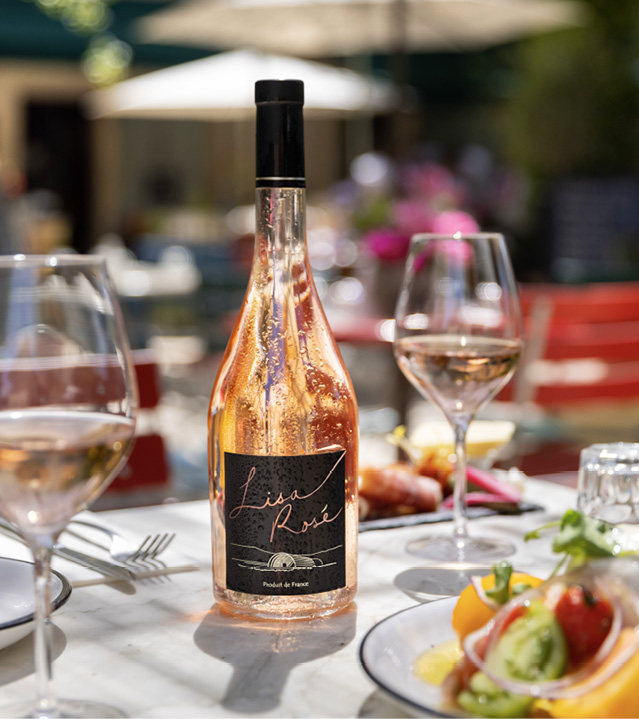
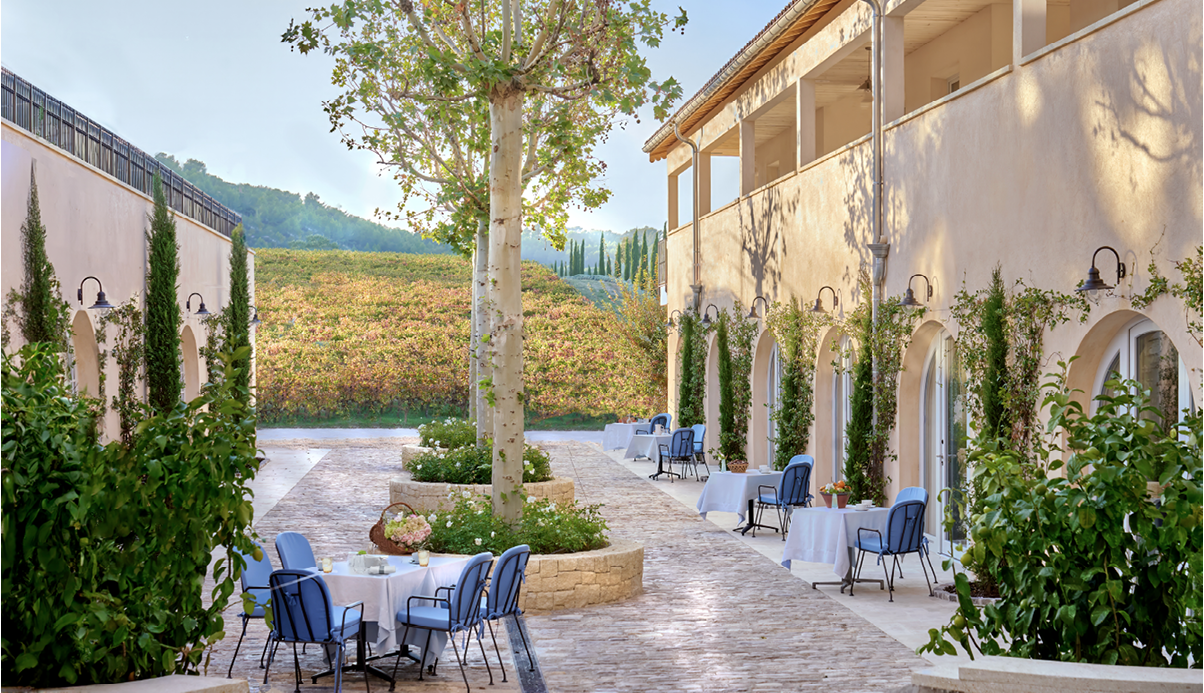
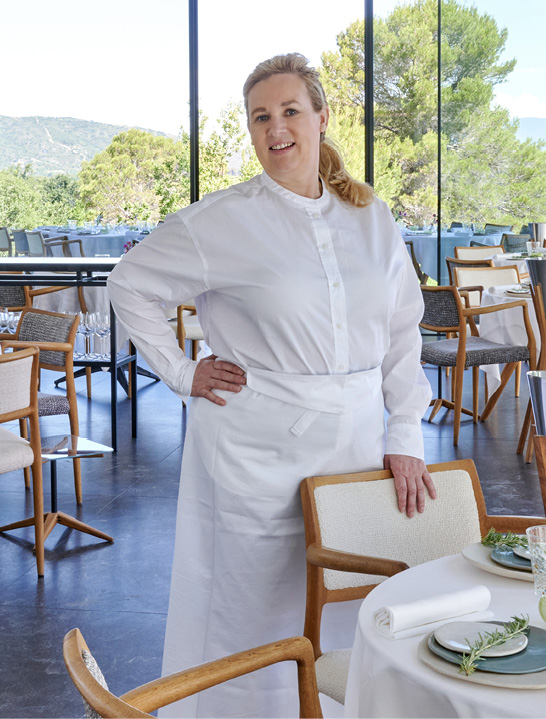
Hélène Darroze restaurant I Photography by Bernhard Winkelmann
Bob Dylan, Rail Car I Photography by Stéphane Aboudrama
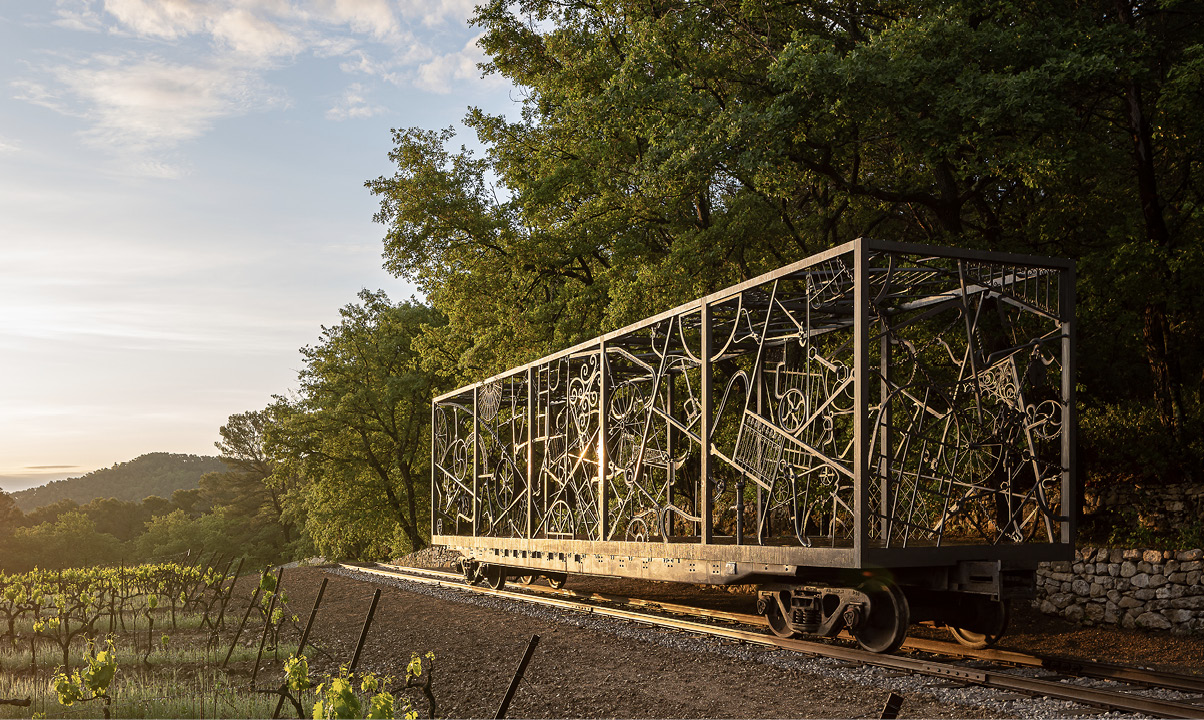
Everything McKillen has created at Château La Coste is intensely personal, an exploration of his ever-evolving passion for art, winemaking and new experiences.

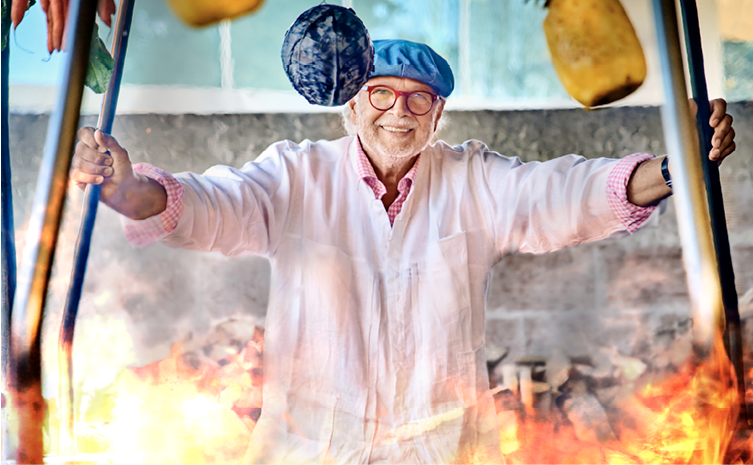
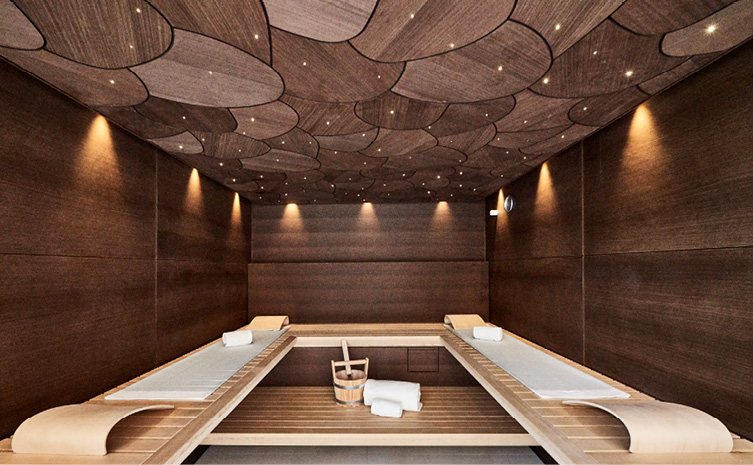

Chef Francis Mallmann I Photography by Richard Haughton

